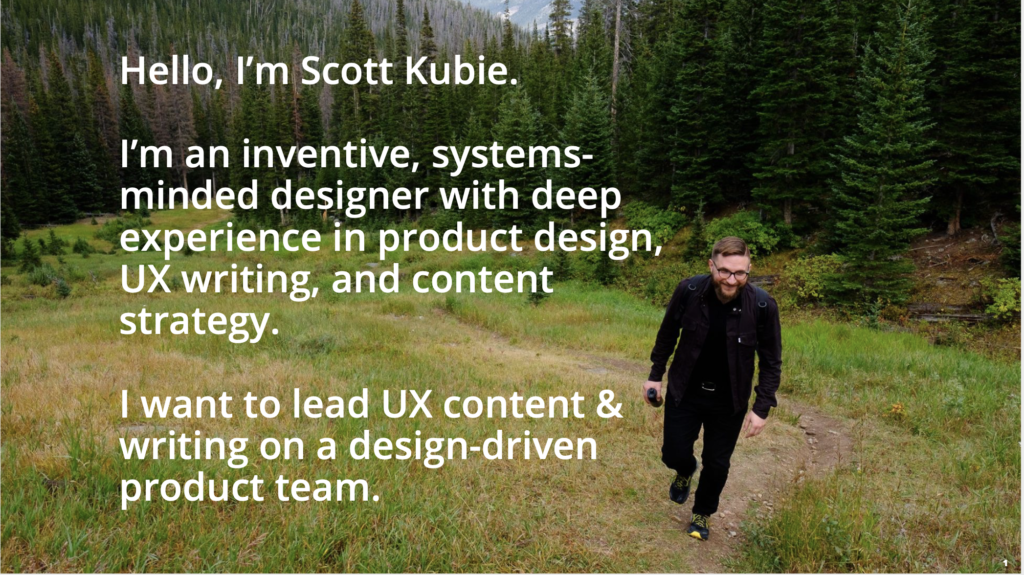Your portfolio should include narrative, process, and you.
Narrative. Tell a story about what the problem was, how you explored the problem, and how you solved (or failed to solve) the problem.
A children’s picture book makes great portfolio template. Not too many words, a clear story with lots of consistency and repetition, big text you can read from across the room, and a pretty picture on each page.
Process. And outcomes. Not just outputs. There will always be someone that can make prettier wireframes than you, and there will always be someone that can write better than you, and they might very well be applying for the job you want. So instead show people how you think and approach problems, because that will always be unique to you and your experience.
Get in the habit of taking pictures of your work (like post-its on the wall or participants in a workshop) and saving your sketches and early drafts. Those are the kinds of visuals you’ll need in order to tell a process story.
You. Make your portfolio your portfolio. Say hello, give them a wave, put in a nice picture of yourself or your dog or the view out the window from where you do your work.

Make every headline work to say something about you and what you did. It’s not important that the portfolio reviewer understands the details of your project, but rather, that they understand that you understood the details (and your users), and paid attention to them in your process.
Send me your questions! I’d love to know what you want to know about content strategy, UX writing, product strategy, writing, creativity, or any of the other topics on this site.
If you found this post helpful, Buy Me a Coffee.